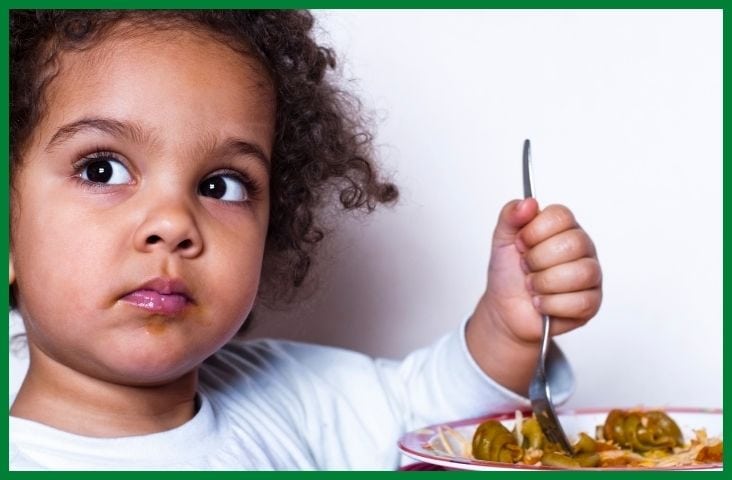
Hide and Seek in the Kitchen: Disguising the foods your child won’t eat
No matter how tasty our food is and how creatively we craft our little ones’ dinners to look like funny faces, many children will still reject certain foods. Sometimes, it seems the only way we can get our fussier kids to eat the foods we know their bodies need is to hide them in the foods they will eat.
I do realise there are two opposing views on this, and I can understand that some parents feel it’s not right to ‘trick’ children. I agree that this is not ideal; it’s much better if we can convince our kids to eat everything without disguising it. In fact, I probably held this view myself prior to having a stubbornly fussy child of my own. These days, I do recognise that some children are just more difficult to feed than others for a multitude of reasons. I also understand the disappointment of cooking lovely food for your kids only to have it rejected, as well as the worry that your child’s developing body may not be receiving the nutrients it requires for proper growth.
Hiding veg in other foods can make a big difference to the amount our children eat. University researchers at Pennsylvania State University in the USA added extra pureed vegetables, such as broccoli, cauliflower, zucchini and tomatoes, to popular children’s meals. They tested the foods on children aged 3-5 years old, and found that the children ate just as much of these foods as the versions without added veg. By eating the ‘added veg’ versions, the preschoolers nearly doubled the amount of vegetables they ate per day. So we know it can work. Thus, I thought some ideas for hiding foods children often reject, particularly vegetables, might be useful.
Of course, it’s key to put the rejected food into another food they enjoy already. Start with just a little to ensure it’s not detected. You can increase the amounts as they get used to the flavour. I find it’s especially important to match the texture. For this, I find my best friend is a hand-held stick blender. My new trick is blending the sauce of casseroles or the mild curries we eat. My fussy son, though he now eats a much wider range of foods, still baulks at onions. Any onion. As the joke goes, he can’t find his school shoes, but he can find a millimetre-sized speck of onion in his food. So I now start a casserole by frying chopped onion, often along with diced carrot or mushroom. When the dish is just about cooked, I take the meat out of the saucepan and blend the sauce to super-smooth. I add back the meat, along with a selection of chunkier veg he is happy to eat. I can’t believe it’s taken me so many years to figure out this trick!
Here are a few more:
Tricks to hide vegetables
Vegetables take the prize for the food most commonly rejected. Keep in mind that children don’t need to eat all veg – it’s ok to have a few they dislike, just as adults do. My rule of thumb is that we all should, at the very least, eat a green and a red/yellow/orange veg each day, and have a little variety. If your kids struggle with this, you might want to try hiding some to get the variety they need. A great timesaver is to make purees of veg your kids dislike and freeze them in ice cube trays. Then, you can easily pop a few cubes into foods they’re suitable for.

You might also:
- Mash well-cooked broccoli into pesto before adding it to pasta
- Blend a variety of vegetables into a tomato pasta sauce – zucchini, mushrooms, and carrots are good to try
- If your kids like a soup that contains a vegetable, try adding other veg that are similar in colour to the one they like. For example, add some zucchini into pea soup, or red peppers into tomato soup. Use the trusty stick blender again to blitz it to a smooth texture.
- Hide finely chopped or grated vegetables under the cheese on home-made pizza
- Add thick vegetable puree or very finely grated veg to home-made meatballs or burger patties
- Mix some cauliflower ‘rice’ into regular white rice. To make cauliflower rice, just whizz raw cauliflower in a food processor or grate it, then microwave until tender.
- Fruit smoothies, or fruit purees for dessert, can be an easy way to disguise some vegetables. For example, you might be able to sneak some carrot or cooked sweet potato into mango or apricot puree – try about ¾ fruit and ¼ veg to start with.

Tricks to hide fruit (and veg)
- It can be tricky to tell what’s in a juice – start with a base of a fruit juice your children enjoy, and you might be able to sneak in some fruits they don’t eat, and maybe even some vegetables. You could be trendy and add a little kale, or just go for a bit of added carrot or celery – not too much or they’ll notice!
- A crumble made with a strongly coloured fruit can be a good way to hide fruit or even veg puree that kids don’t like. A bit of red pepper puree will be undetectable in a red plum crumble, or try pumpkin puree in an apple and apricot crumble.
- Pureed or finely grated veg or fruit such as carrot, beetroot, apple or peach can be added to muffins, cakes or banana bread. You might need to reduce the liquid or oil or butter as the purees will add moisture. They also add sweetness, so the amount of sugar can be reduced a bit too.
Tricks to hide meat and plant-based protein foods
My fussy son dislikes most vegetables, and has also been a challenge with many types of meat. While he won’t touch beans (apart from baked beans) or nuts, they can be easy vegetarian protein sources to hide in other foods if your little ones aren’t so keen on meat.
- If allergies aren’t an issue, add peanut butter or other nut butters into smoothies, muffins and suitable puddings. Look for the lower-salt types if possible.
- Mash kidney beans into mince dishes such as bolognaise sauce
- Toss a handful of red split peas or lentils into bolognaise sauce, stews or thick soups
- Blend a softer meat such as well-cooked chicken into a thick soup.
Double servings
While I do think there can be a place for disguising nutritious foods, it’s not an excuse to stop having them visible on the plate as well. Children still need to see some veg (or whatever the ‘difficult’ food is) and be encouraged to eat them. One reason is because repeated exposure is probably the best way to get children used to eating foods they’re not keen on. It’s also important that they learn that these foods are part of a regular healthy family meals.
What not to do…
It should go without saying that a different colour is a dead giveaway for a ‘hidden’ food. I asked a few ‘mum friends’ for their tips to include in the newsletter. One of them shared what hadn’t worked – she tried adding whole green peas to apple crumble. As my bigger boys would say: Epic fail!
©Fiona Hinton 2021
MEDICAL DISCLAIMER: Please note that this blog is for general information only, and should not be taken as a substitute for qualified medical advice. Please discuss medical issues with your child’s doctor before taking any action.
About Fiona: Fiona Hinton is a dietitian, but describes herself as a nutrition translator, taking the science of nutrition and translating it into foods we love to eat, to nourish both body and soul. She has over 20 years of experience as a dietitian, working in a wide range of areas from hospital wards to running her own private practice. Fiona has a special interest in children’s nutrition. As a mum of three school-age boys, she has first-hand experience of the issues associated with feeding young children, such as weaning and fussiness. Fiona specialises in real-life strategies and practical suggestions to convert nutrition advice into food kids will eat. Fiona has collaborated on several books, including one with best-selling children’s food writer Annabel Karmel, as well as training childcare staff in children’s nutrition.





